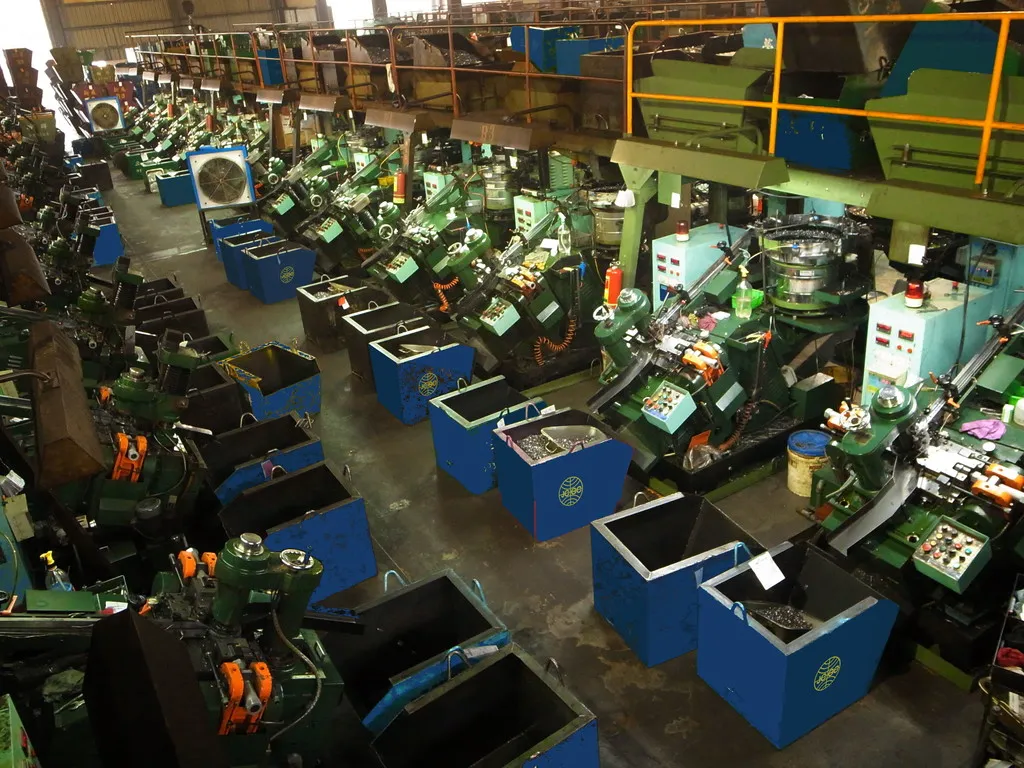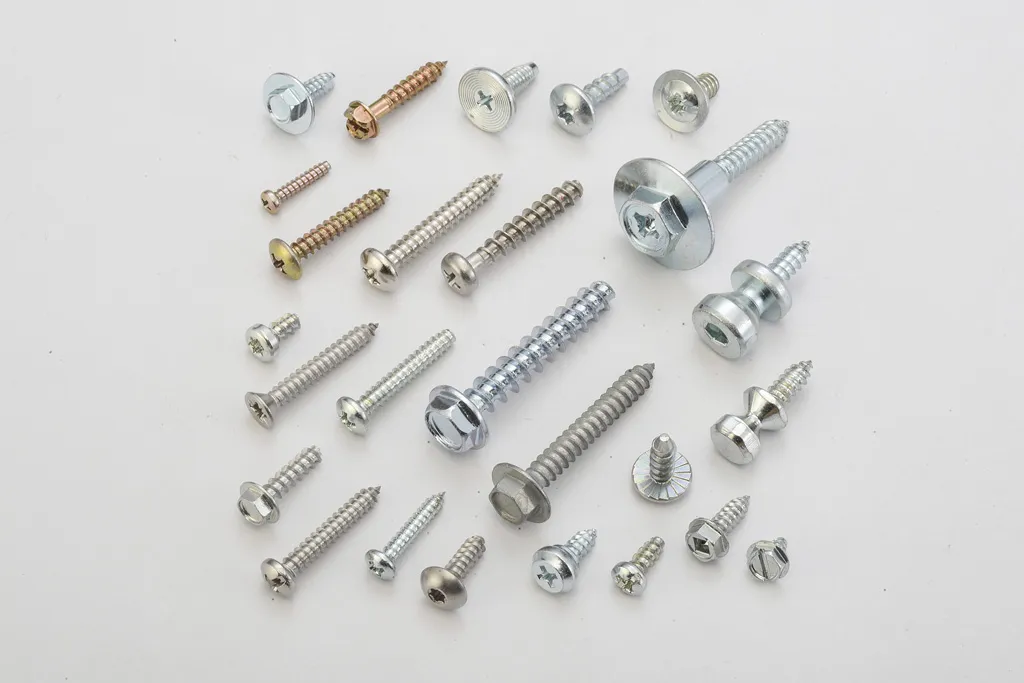Applications ranging from tapping thin-gauge sheet metal to specialty mating parts
JC Grand manufactures and distributes a wide range of high quality self-tapping screw designs in various materials, including carbon steels, alloy steels, stainless steels and copper (and even aluminum) alloys.
A self-tapping screw is a screw that can tap its own hole as it is driven into the material. For hard substrates such as metal or hard plastics, the self-tapping ability is often created by cutting a gap in the continuity of the thread on the screw, generating a flute and cutting edge similar to those on a tap. Thus, whereas a regular machine screw cannot tap its own hole in a metal substrate, a self-tapping one can (within reasonable limits of substrate hardness and depth). For softer substrates such as wood or soft plastics, the self-tapping ability can come simply from a tip that tapers to a gimlet point (in which no flute is needed). Like the tip of a nail or gimlet, such a point forms the hole by displacement of the surrounding material rather than any chip-forming drilling/cutting/evacuating action.
Some self-tapping screws are also self-drilling, which means that, in addition to the tap-like flute in the leading threads, there is also a preliminary drill-like fluted tip that looks much like the tip of a center drill. These screws combine a thrilling-like action and the fastener installation itself into only one driving motion (instead of separate drilling, tapping, and installing motions); they are thus very efficient in a variety of hard-substrate applications, from assembly lines to roofing.
Sheet metal screws (sometimes called “sheet-metal self-tappers” are a type of self-tapping screw despite the thread created in the sheet of metal being small. Pan-head PK Self-tapping screws are common in electrical equipment, while flatter-headed truss or flat countersunk headed self-tapping screws are more common in aviation applications.
Winged self-drilling have thin wings wider than the thread formed just behind the self drilling head. These cut a clearance hole in soft materials (such as wood or plastic), but are destroyed by more robust materials (such as metal). Thus, to clamp some material to metal, the clearance drilling, tap drilling, thread tapping, and fixing itself can happen in a single operation from one side, with the materials in their final position.
Self-tapping screws are used in a variety of applications ranging from DIY carpentry to surgery. Many dental implants and orthopedic bone screws are examples of self-tapping screws used in surgery.

